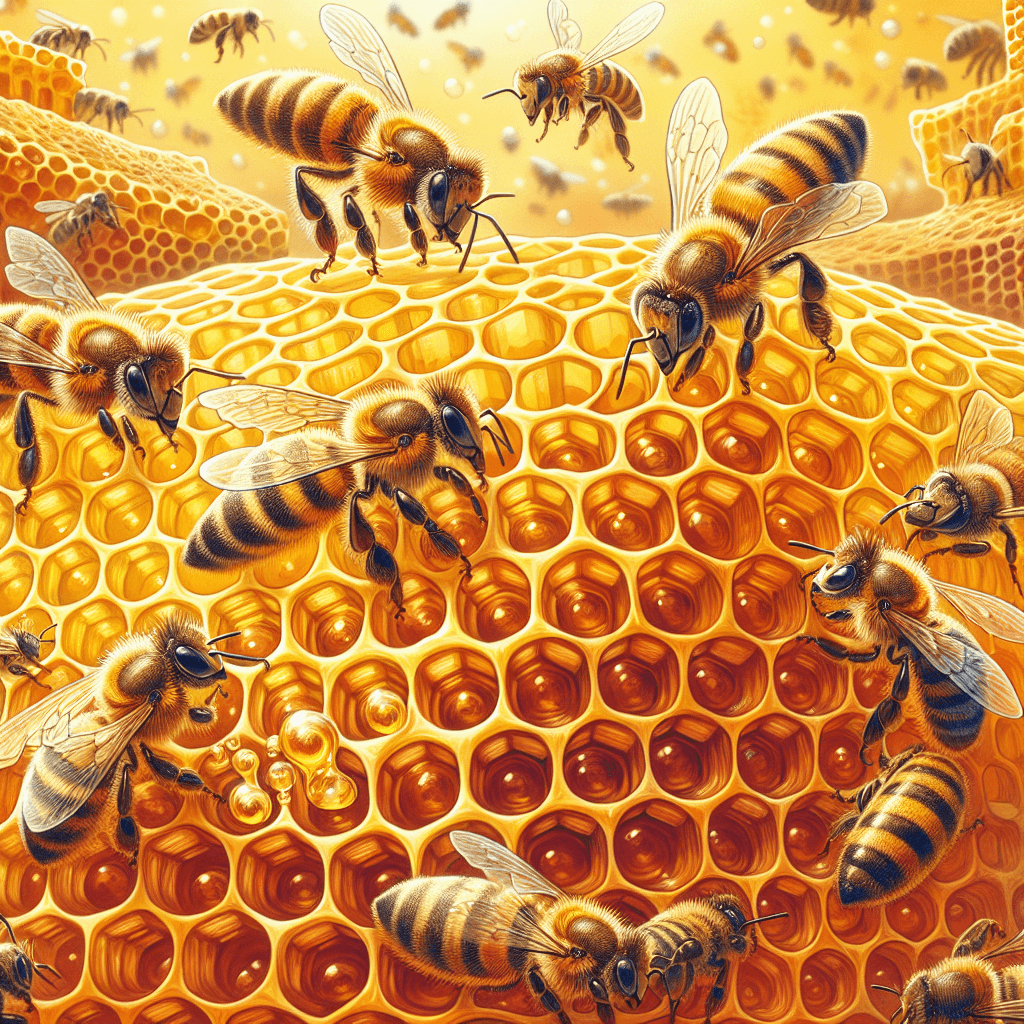Why do bees build their honeycombs with perfect hexagons
It’s not just a random choice; the honeycomb's perfect hexagonal pattern is the solution to a complex mathematical problem that ensures the entire colony's survival.


Too Long; Didn't Read
Bees use hexagons because it is the most efficient shape, using the least amount of wax to hold the most honey. It creates an incredibly strong structure with no wasted space between cells.
The Hexagonal Masterpiece: Why Do Bees Build Their Honeycombs with Perfect Hexagons?
Have you ever looked closely at a honeycomb and marveled at its perfect, repeating pattern? For centuries, this incredible feat of natural engineering has fascinated mathematicians, engineers, and biologists alike. It’s not just beautiful; it’s a masterclass in efficiency and design. But why this specific six-sided shape? Out of all the possible geometric forms, what makes the hexagon the perfect choice for a bee’s home and pantry? This post will delve into the mathematical, physical, and biological reasons that explain why bees build their honeycombs with perfect hexagons, revealing a hidden genius in the hive.
The Geometry of Maximum Efficiency
To understand the hexagon's brilliance, we must first consider the alternatives. Bees need to build a structure that can store the maximum amount of honey while using the minimum amount of a very precious resource: beeswax. It takes bees a significant amount of energy to produce wax—they must consume about eight pounds of honey to produce just one pound of wax. Therefore, efficiency isn't just a preference; it's a matter of survival.
Let's look at other shapes that can fit together without gaps (a property called tessellation):
- Triangles and Squares: Both of these shapes can tile a plane perfectly. However, for a given area, a hexagon has a shorter total perimeter than either a triangle or a square. Less perimeter means less wax is needed for the walls.
- Circles: While a circle is technically the most efficient shape for holding the most area with the least perimeter, circles don't tessellate. Packing them together leaves wasteful gaps between the cells, which would need to be filled with even more wax.
The hexagon strikes the perfect balance. It tessellates perfectly, leaving no wasted space, and it uses the least amount of material to do so. This principle is so perfect that mathematicians formalized it in what is known as the "Honeycomb Conjecture," which states that a hexagonal grid is the best way to divide a surface into regions of equal area with the least total perimeter. It took nearly 2,000 years for a mathematician, Thomas Hales, to formally prove this in 1999.
More Than Just Storage: The Strength of the Six-Sided Shape
Beyond saving wax, the hexagonal structure provides incredible strength and stability. Each cell shares its walls with its neighbors. The junctions where three walls meet form angles of exactly 120 degrees, a configuration that distributes stress and tension evenly across the entire structure.
This shared support system makes the honeycomb remarkably durable. A single pound of honeycomb can support several pounds of honey. This structural integrity is vital for the colony, ensuring their precious food stores and developing larvae are safe and secure. The design is so effective that it has been mimicked by humans in engineering and construction, from aerospace design to building materials, for its unique combination of lightness and strength.
Are Bees Tiny Mathematicians? The Role of Instinct and Physics
So, do bees consciously perform complex geometric calculations? The answer is no, but their instincts, combined with the laws of physics, lead to this perfect result. Researchers have found that bees don't start by building perfect hexagons. Instead, they build soft, roughly circular cells in close proximity to one another.
The magic happens next. The heat generated by the bees' bodies (the hive is kept at a balmy 35°C or 95°F) warms the wax, making it soft and pliable. At this point, physics takes over. The forces of surface tension and the pressure from adjacent cells pull the soft circles into the most energy-stable shape. Just as soap bubbles squeezed together form hexagons at their junctions, the bees' cells naturally settle into the hexagonal pattern. It is a beautiful example of a self-organizing process where simple rules and physical forces create a complex, highly optimized structure.
A Lesson from the Hive
The honeycomb is far more than just a home for bees; it's a testament to the power of evolutionary design. The hexagon is the ultimate solution to a complex problem: how to store the most with the least, while creating a structure that is both light and strong. By using this shape, bees have optimized their use of energy and resources, a critical factor in their long-term survival and success. The next time you see a honeycomb, take a moment to appreciate the perfect geometry at play—a simple shape that embodies a profound lesson in natural efficiency.
More Articles

Why do movie punches sound so much crunchier and louder than real ones?
That sickening, bone-crunching punch you hear in the movies is a lie, and the secret ingredient is probably sitting in your refrigerator right now.

What makes a beer bottle suddenly foam over just from a light tap on top?
It’s not magic, it’s a shockwave; discover the explosive physics that turns a gentle tap on your beer bottle into an instant foamy geyser.

Why do police officers touch the back of a car during a traffic stop?
It’s not a random habit; that simple touch is a calculated, old-school tactic designed to leave a crucial and potentially life-saving piece of evidence behind.